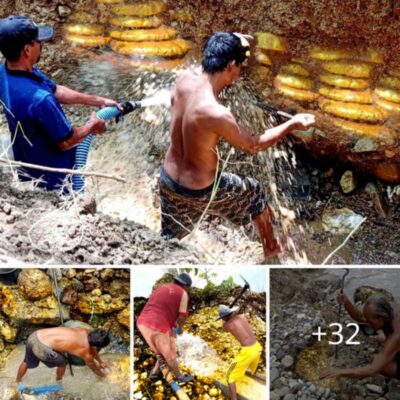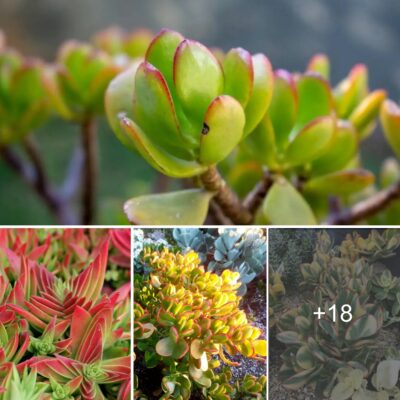Honey is known for its culinary and medicinal benefits from thousands of years. But did you know there are ways to use honey in the garden? The antibacterial and antifungal properties make it an excellent rooting hormone, you can create a fertilizer with it to feed your plants and a lot more. Find out 7 never-known “Uses of Honey in Garden” in this article.
1. Root Cuttings with Honey
Honey has antibacterial and antifungal properties and provides an energy source that can help promote root growth and keep roots growing strong. When used on cuttings, it helps them to form roots, and once roots develop, can help to create a safe environment where they can continue to grow.
Simply add 2 tbsp of honey to 2 cups of boiled water and leave it to cool. Then dip the ends of your cuttings into this solution before planting. For even better results, mix in a mycorrhizae inoculant as well.
You can also use this solution to water the cuttings once they have been placed into their containers or planting locations.

2. A Fertilizer for Fruiting Annuals
Honey is not only antibacterial and antifungal. It’s also an excellent source of nutrients – not just for us, but for plants too. Honey is a source of many essential plant elements – two of the ‘big three’ – phosphorus and potassium, and also other nutrients like calcium, iron, magnesium, and zinc.
It can be used to make a good organic liquid fertilizer for your plants. The nutrient composition means that it can be particularly beneficial for flowering and fruiting plants.
To make a liquid honey fertilizer, mix a tablespoon or two of honey with 7 cups of boiled water. Stir well, then leave to cool. Then use this to water your flowering or fruiting plants.

3. Foliar Spray to Pep Up Your Plants
In addition to using honey to promote root growth, and improve the flavor of fruits, you can also use it to save plants that are flagging.
If plants are showing signs of nutrient deficiency, especially if you suspect a deficiency of one of the essential plant nutrients honey can provide. Plants that need a boost may benefit from the use of a honey-based foliar spray.
Add 2 tbsp of honey to a gallon of water, then spray this solution onto the leaves of unhealthy plants every week or two. If a nutrient deficiency is to blame, you may soon see positive results.
Again, however, think about what might be attracted to the honey foliar spray before you decide to use it.

4. As a Literal Honey Trap for Pests
I would recommend taking steps to avoid an imbalance in your garden by attracting natural predators for pest species. And by making sure there is as much life in your garden as possible. But in an organic garden, imbalances can sometimes still occur.
If you have a boom in the slug, or fruit fly populations, for example, you can use honey as an ingredient in a trap to catch them.
To catch slugs, sink a jar filled with water mixed with honey and yeast into the ground and wait for slugs to fall in. Then collect the slugs and dispose of them regularly.
To catch fruit flies, add rotting fruit, honey and apple cider vinegar to a jar. Cover it with a lid with small holes pierced in it, so they go in, but do not come back out.

5. Helps cutting thrive
Propagating plants through cuttings is a great way to grow entirely new vegetables, herbs, flowers, bushes, or trees. The issue is, sometimes it can be difficult to nurture these cuttings in order to grow and survive on their own. Honey is here to help! Putting honey on cuttings protects the severed ends and promotes new growth. The properties in honey work as a ‘rooting hormone’ to encourage a cutting to establish sturdy roots.
To enhance the natural growth and survival of a cutting, dip the cut end directly into a small bowl of honey, then place the honey-dipped cutting into a pre-made indentation in your garden soil. Push the dirt around the propagated stem/leaf to fill the hole and support the cutting. Then sit back and watch it transform into an entirely new plant.

6. Revives Dying Plants
If you have done everything you can for a dying plant (checked for signs of overwatering, removed dead leaves, got rid of pests, etc.) the next method is giving your struggling plants some honey. A spritz of honey on the leaves or a mixture of honey-water fertilizer (see above for recipe), might be just the thing it needs.
When dying plants are given honey, it provides them with an abundance of nutrients that assist with revival. Honey has been observed to protect and aid plants against various diseases or even root rot. Just the thing your plants need to perk up and thrive!

7. Provides anti-fungal and antibacterial properties
It is common knowledge that honey is good for our health – we put it in our tea to soothe a sore throat and add it into lozenges to relieve cold symptoms. The same goes for plants. Honey is filled with antioxidants, minerals, and vitamins that provide anti-fungal and antibacterial protection. A dose of honey might help a plant re-establish stronger roots or assist it in overcoming disease.

Thank you for spending time to see this article of Ideassimple about 7 Special Uses Of Honey For Your Garden That You Should Know. Please give us a like, comment or share if you find the article good and meaningful. Have a good day!











